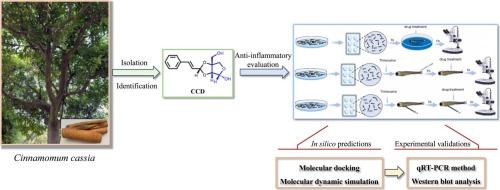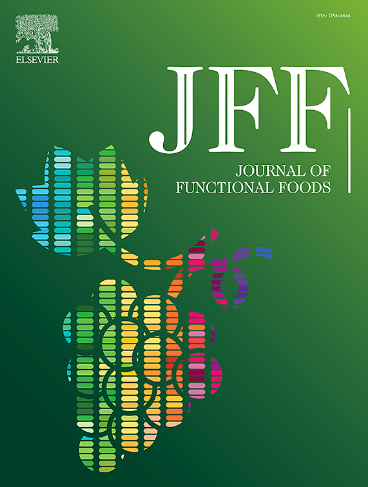Cinnacassdiol, a novel anti-inflammatory phenylpropanoid from Cinnamomum cassia barks: Insights from an integrated in vitro, in vivo and in silico investigation
IF 4
2区 农林科学
Q2 FOOD SCIENCE & TECHNOLOGY
引用次数: 0
Abstract
Inflammation is acknowledged as a pivotal factor in numerous health problems. Cinnamomum cassia, a classic plant with both medicinal and culinary value, is highly recognized for its significant anti-inflammatory properties. In this study, an undescribed phenylpropanoid-glycosyl derivative, named cinnacassdiol (CCD) was obtained from the barks of C. cassia and structurally characterized using a combination of HR-ESI-MS, NMR and quantum calculation of optical rotation (OR). Anti-inflammatory evaluation revealed that CCD significantly inhibited excessive neutrophil migration in multiple zebrafish models. Molecular docking combined with molecular dynamic (MD) simulations prompted the strong binding affinities and favorable energetical stabilization of CCD toward the protein domains of IL-6, TNF-α, IκBα and NF-κB. This prediction was validated in LPS-stimulated zebrafish and RAW 264.7 cell models at both mRNA and protein levels. Overall, this study identified a novel compound from C. cassia and established a robust scientific basis for its development as an anti-inflammatory functional food ingredient.

肉桂醇,一种新型抗炎苯丙素,来自肉桂树皮:来自体外、体内和计算机综合研究的见解
炎症被认为是许多健康问题的关键因素。肉桂,一种具有药用和烹饪价值的经典植物,因其显著的抗炎特性而得到高度认可。本研究从肉桂树皮中获得了一种未被描述的苯丙醇糖基衍生物cinnacassdiol (CCD),并利用HR-ESI-MS、NMR和量子旋光度计算(OR)对其进行了结构表征。抗炎评估显示,CCD在多种斑马鱼模型中显著抑制中性粒细胞过度迁移。分子对接结合分子动力学(MD)模拟表明,CCD对IL-6、TNF-α、i -κB α和NF-κB蛋白结构域具有较强的结合亲和性和较好的能量稳定性。这一预测在lps刺激的斑马鱼和RAW 264.7细胞模型中得到了mRNA和蛋白水平的验证。总之,本研究从决明子中鉴定出一种新的化合物,为其作为抗炎功能食品成分的开发奠定了坚实的科学基础。
本文章由计算机程序翻译,如有差异,请以英文原文为准。
求助全文
约1分钟内获得全文
求助全文
来源期刊

Journal of Functional Foods
FOOD SCIENCE & TECHNOLOGY-
CiteScore
9.60
自引率
1.80%
发文量
428
审稿时长
76 days
期刊介绍:
Journal of Functional Foods continues with the same aims and scope, editorial team, submission system and rigorous peer review. We give authors the possibility to publish their top-quality papers in a well-established leading journal in the food and nutrition fields. The Journal will keep its rigorous criteria to screen high impact research addressing relevant scientific topics and performed by sound methodologies.
The Journal of Functional Foods aims to bring together the results of fundamental and applied research into healthy foods and biologically active food ingredients.
The Journal is centered in the specific area at the boundaries among food technology, nutrition and health welcoming papers having a good interdisciplinary approach. The Journal will cover the fields of plant bioactives; dietary fibre, probiotics; functional lipids; bioactive peptides; vitamins, minerals and botanicals and other dietary supplements. Nutritional and technological aspects related to the development of functional foods and beverages are of core interest to the journal. Experimental works dealing with food digestion, bioavailability of food bioactives and on the mechanisms by which foods and their components are able to modulate physiological parameters connected with disease prevention are of particular interest as well as those dealing with personalized nutrition and nutritional needs in pathological subjects.
 求助内容:
求助内容: 应助结果提醒方式:
应助结果提醒方式:


